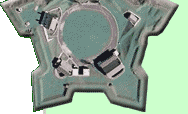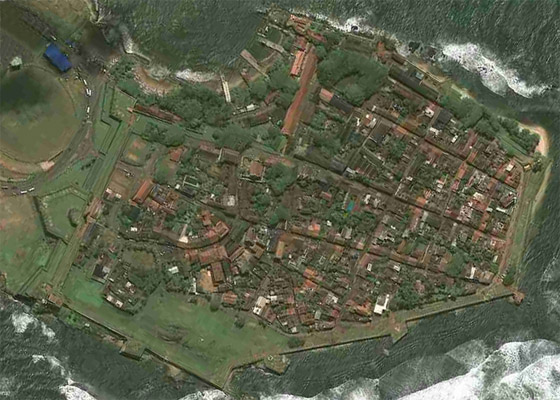
 |
 |
Galle Fort Galle, Sri Lanka |
 |
 |
 |
 |
 |
||
 |
Galle, Sri Lanka (known as Ceylon before 1972) is an ancient port town. There is suspicion that Galle is referred to as the seaport of Tarshsi in the Bible, from whence King Solomon got his ivory and peacocks. Galle was definitely a major exporter in the cinnamon trade as early as 1400, trading with ships from China, India, Rome, Greece and Persia. In 1411 a stone tablet was erected in Galle, written in Persian, Sinhala and Chinese, memorializing the visit of Chinese Admiral Zheng He (1371-1435). Galle was first blessed with the benevolent attentions of the western world in 1505, when a Portuguese ship, captained by Lourenzo de Almeida (died 1508), was driven ashore near Galle by a storm. The residents of the town yelled a hearty "No thanks for the offer of subjugation!" and refused to allow the Portuguese into their city...so naturally the Portuguese fought their way in and took over. By 1597, the Portuguese had built a fortification at Galle, as well as outposts at several Sri Lankan coastal towns. Portugal discovered it wasn't the only nation that enjoyed cinnamon in 1640, when it was forced to give up its Sri Lankan colonies to the Dutch East India Company. The Sri Lankans had originally allied with the Dutch in order to rid itself of the Portuguese, only to find themselves with different Europeans in charge of everything. It was the Dutch who built Galle Fort in 1663. The town's administrative center was located behind the fort's walls. The British East India Company took their turn at possessing Sri Lanka starting in 1796, leaving Galle Fort relatively unchanged and continuing to administer the town from therein. The fall of the Kingdom of Kandy (I am not making this up), an independent monarchy in Sri Lanka since the 16th century, made all of Sri Lanka a British protectorate in 1815. Today the propertiy inside Galle Fort is still mostly owned by Dutch folks, who are working to have Galle named a Free Trade Zone, so they won't have to pay any taxes! Galle Fort is the largest remaining European-built fortification in Asia. Thanks, Europe. |
 |
 |
||
|
|
|||||||
Info Source 1
Info Source 2
Info Source 3
Info Source 4
Info Source 5 Info Souce 6 Thanks to Google Maps for the image! ©2010 starforts.com |
 |